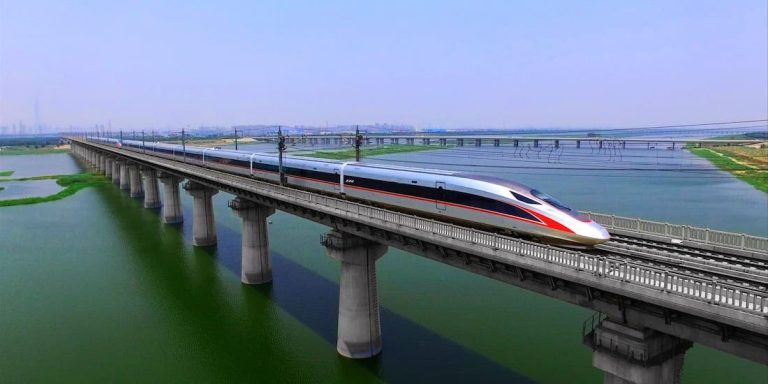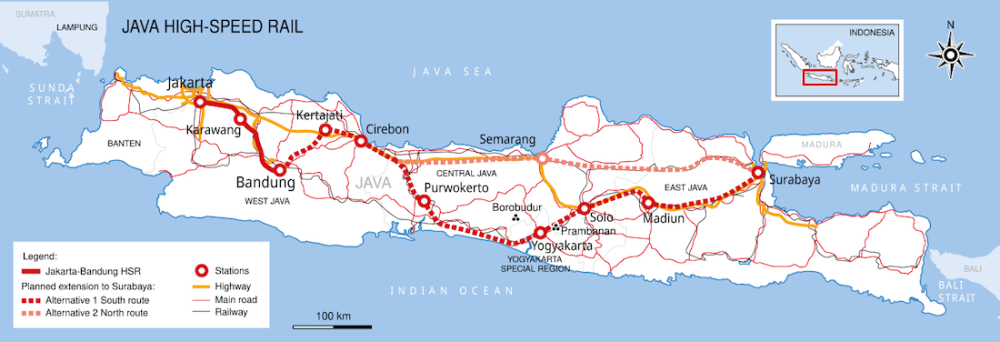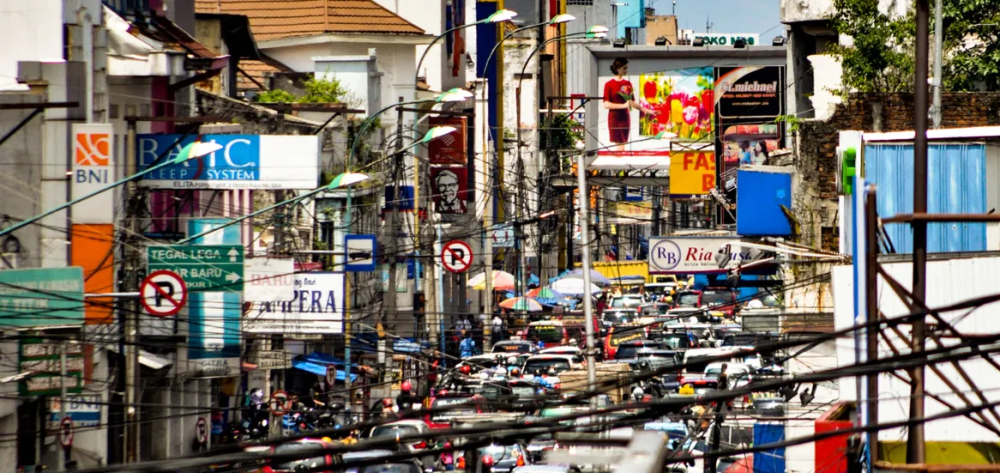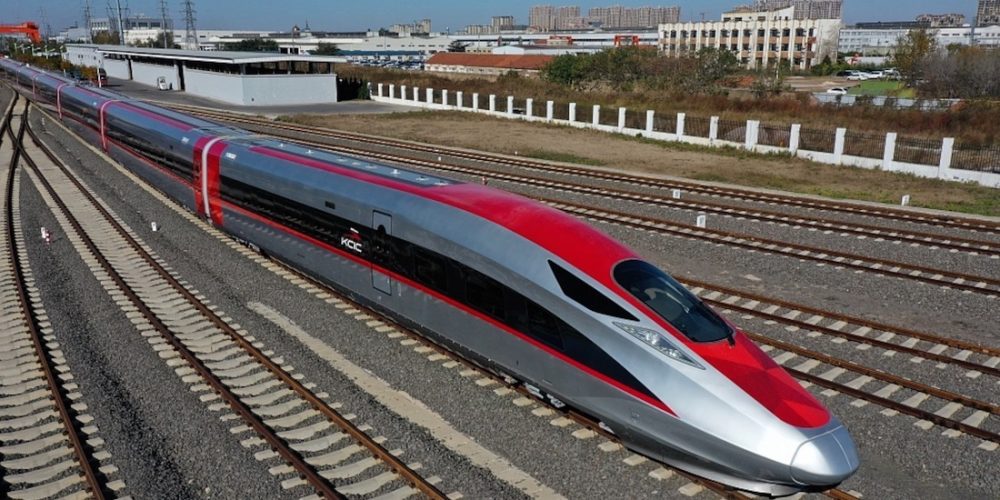
Jakarta-Bandung ‘Whoosh’ Line Cuts Journey Times While Boosting Regional Economic Development
First high-speed train in Southeast Asia, funded by the Chinese government
Jakarta — Indonesia’s Whoosh High-Speed Railway has revolutionized travel by drastically reducing the commute between Jakarta and Bandung, cutting travel time from over three hours to just 46 minutes.
Since launching commercial operations on October 17, 2023, Southeast Asia’s first high-speed railway has become a transformative force in Indonesian transportation and economic development.

Southeast Asia’s Pioneering High-Speed Connection
The Jakarta-Bandung High-Speed Railway, locally known as “Whoosh,” represents a monumental achievement in regional infrastructure development. The Jakarta-Bandung high-speed train project, known as Whoosh, spans 142.3 kilometers connecting Bandung and Jakarta. This engineering marvel operates through four strategically positioned stations: Halim Station in Jakarta, Karawang Station, Padalarang Station, and Tegalluar Station in Bandung.
Zipping from Jakarta to Bandung in just 30–50 minutes at speeds of up to 350 km/hour, it’s fast, smooth, and seriously efficient. The railway system utilizes cutting-edge technology adapted from China’s high-speed rail network, representing successful technology transfer and international cooperation between Indonesian and Chinese engineering teams.
The project emerged from Indonesia’s urgent need to address transportation bottlenecks along the heavily congested Jakarta-Bandung corridor. Traditional travel methods, including conventional trains and highway transport, often required three to four hours for the same journey, creating significant economic inefficiencies and limiting regional integration.
Remarkable Passenger Growth and Operational Success
According to PT Kereta Cepat Indonesia-China (PT KCIC), a joint venture consortium between Indonesian and Chinese firms that constructs and runs the HSR, Whoosh has transported 5.79 million passengers by Oct. 17 this year, including 300,000 international tourists from 159 countries. These impressive ridership figures demonstrate the railway’s immediate acceptance among Indonesian travelers and international visitors.
Over 2.5 million passengers rode the Jakarta-Bandung High-Speed Rail (HSR) from its commercial launch on 17 October 2023 to 17 April 2024, averaging around 415,000 a month and 14,000 a day for the six months, with a peak travel day of 21,537 passengers. The consistent growth trajectory indicates strong market demand and successful operational management.
The railway’s success extends beyond mere passenger numbers. International tourists from 159 countries have embraced Whoosh as their preferred transportation method, contributing significantly to Indonesia’s tourism sector recovery and growth. Business travelers particularly appreciate the predictable journey times and comfortable amenities, making the service increasingly popular among corporate users.
Economic Transformation and Regional Development
The Whoosh railway has catalyzed substantial economic development across the Jakarta-Bandung corridor. Real estate markets in both cities have experienced increased activity, with property values rising near station locations. Small businesses and local entrepreneurs have emerged to serve the growing passenger base, creating employment opportunities and stimulating local economies.
Tourism sectors in both Jakarta and Bandung have benefited enormously from improved connectivity. Day trips between cities have become more feasible, allowing tourists to experience both urban Jakarta’s metropolitan attractions and Bandung’s cooler climate and cultural offerings. Hotels, restaurants, and entertainment venues report increased bookings and revenue directly attributable to enhanced transportation links.
The railway project has also demonstrated Indonesia’s capacity for managing large-scale infrastructure initiatives. PT KCIC, the joint venture responsible for construction and operations, has successfully maintained safety standards while achieving operational efficiency targets. This success provides a foundation for future high-speed rail projects across the archipelago.

Technological Innovation and International Cooperation
The Whoosh project represents successful technology transfer from China’s high-speed rail expertise to Indonesian conditions. Engineers adapted proven Chinese technology to accommodate Indonesia’s tropical climate, seismic activity, and geographic challenges. The trains feature advanced safety systems, climate control, and passenger amenities designed for Southeast Asian preferences.
Environmental sustainability considerations influenced the project’s design and implementation. The electric-powered trains produce significantly lower carbon emissions compared to highway transportation, contributing to Indonesia’s climate change mitigation efforts. Energy-efficient systems and sustainable construction practices demonstrate the project’s commitment to environmental responsibility.
The international cooperation aspect extends beyond technology transfer to include training programs for Indonesian personnel. Local engineers, technicians, and operations staff received comprehensive training, ensuring knowledge transfer and building domestic expertise for future railway projects.

Future Expansion and National Impact
In 2025, the Indonesian government revealed ambitious plans to extend the line all the way to Surabaya, potentially linking major cities across Java. This expansion would create a comprehensive high-speed rail network connecting Indonesia’s most populous and economically significant regions.
The success of the Jakarta-Bandung line provides crucial experience for future projects. Government officials and transportation planners can apply lessons learned about route selection, station placement, and operational management to subsequent high-speed rail initiatives. The project’s financial model and public-private partnership structure offer templates for similar infrastructure investments.
Urban planning implications extend far beyond transportation efficiency. The railway enables new patterns of residential and commercial development, potentially reducing urban congestion in Jakarta while promoting balanced regional growth. Commuter patterns are already shifting as residents consider living in Bandung while working in Jakarta, or vice versa.
Summary for Audio
Indonesia’s Whoosh high-speed railway, connecting Jakarta and Bandung, has revolutionized regional travel since October 2023. The 142-kilometer line reduces journey time from over three hours to 46 minutes, transporting over 5.79 million passengers in its first year. Operating at speeds up to 350 kilometers per hour, the railway demonstrates successful Chinese-Indonesian cooperation while driving economic growth, tourism, and urban development across Java’s most populous corridor.
Whoosh: Indonesia’s High-Speed Railway Connects Major Cities (July 28, 2025)
#IndonesiaHighSpeedRail #SoutheastAsiaTransport #ModernTransportation
#InfrastructureDevelopment #IndonesiaEconomy #HighSpeedRailway
#WhooshTrain #RegionalConnectivity #IndonesiaTourism #JakartaBandung
TAGS: jakarta-bandung, whoosh-train, indonesia-transportation, southeast-asia-infrastructure, high-speed-railway
economic-development,tourism, chinese-indonesian-cooperation, modern-transit, regional-connectivity
